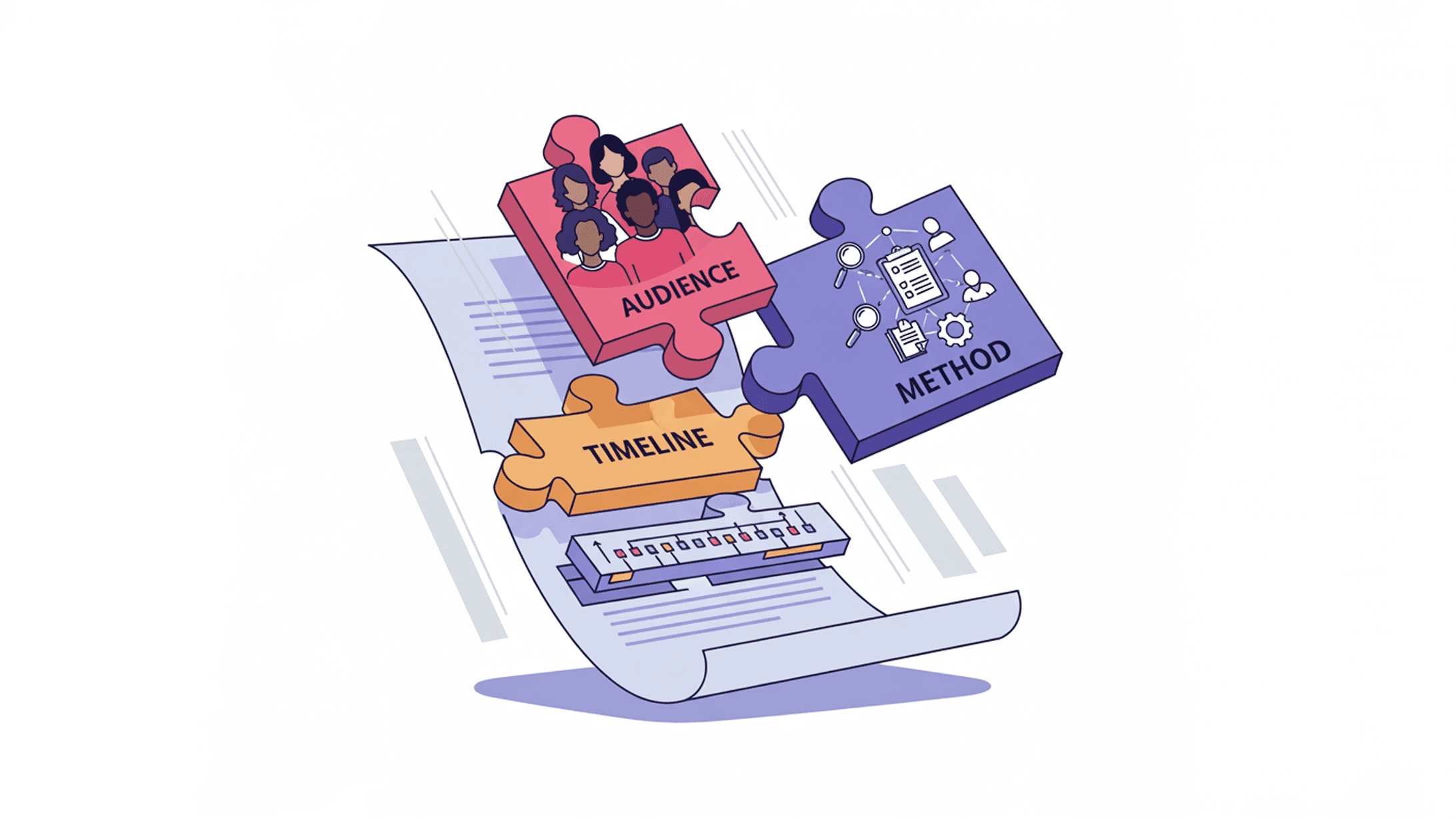
Tuesday, August 19, 2025•3 min read
How to Build a Market Research Strategy Template That Actually Guides Action
Market research often ends up as a checkbox item—a static report filed away, rarely referenced after presentation. But a strong market research strategy template doesn't just document findings. It drives decisions.
This guide walks you through building a research strategy template that isn't just informative, but actually useful—guiding product strategy, market entry, messaging, and customer understanding in a repeatable, scalable way.
Why a Strategy Template Matters More Than a Report
A report captures answers. A strategy template defines the questions you need to ask, the structure of your exploration, and the way you'll apply what you learn.
Instead of asking "What did we find out?", a well-designed market research strategy template prompts:
- What are we trying to learn and why?
- Who do we need to hear from?
- How will insights affect roadmap, GTM, or positioning?
- What gaps remain?
What to Include in Your Market Research Strategy Template
You don't need 30 pages to get actionable. Here are the core components your template should include:
1. Research Objective
One clear paragraph. What's the strategic decision you're trying to inform? Be specific (e.g., "Determine whether to reposition our mid-market plan to compete with new entrants").
2. Key Research Questions
Write 3-5 foundational questions. These should be decision-oriented, like:
- "What factors drive purchase decisions in this category?"
- "What alternatives do target customers consider?"
- "What triggers customer dissatisfaction or switching?"
3. Audience Profile
Define who you need to hear from. Segment by:
- Role / job function
- Company size / industry
- Stage in customer lifecycle (prospect, current, churned)
4. Research Method
Be deliberate: Will this be interviews, surveys, or both? Qualitative research (e.g., AI-guided interviews) is essential for uncovering motivations, language, and nuance.
5. Application Plan
This is where most templates fall short. Define how findings will be used:
- What team(s) will review results?
- What decisions will this influence (roadmap, messaging, pricing)?
- How will insights be integrated into planning?
6. Timeline and Milestones
Outline:
- Launch date
- Data collection window
- Debrief and synthesis dates
- Stakeholder presentations
This helps you set expectations and maintain momentum.
7. Open Questions and Assumptions
End your template with a reality check: What are you assuming to be true? What gaps do you expect this research to clarify? Documenting these sharpens focus and improves interpretation.
Build It Inside Perspective AI (Free Template Included)
We've built this exact research strategy template directly into Perspective AI. Instead of a static doc, you can generate your template and launch research from it instantly.
From Template to Insight-Driven Action
A well-built research strategy template turns every market study into an engine for smarter decisions. It prevents insight waste, aligns stakeholders, and brings clarity to chaos.
It doesn't just help you do research. It makes the research matter.
Turn your feedback into growth. Join Perspective AI today and experience AI-driven research firsthand.